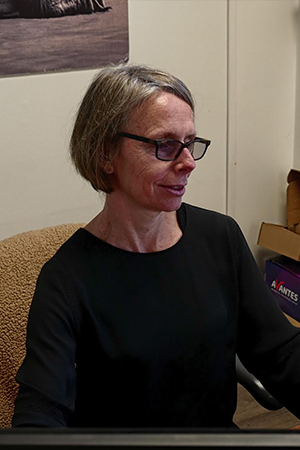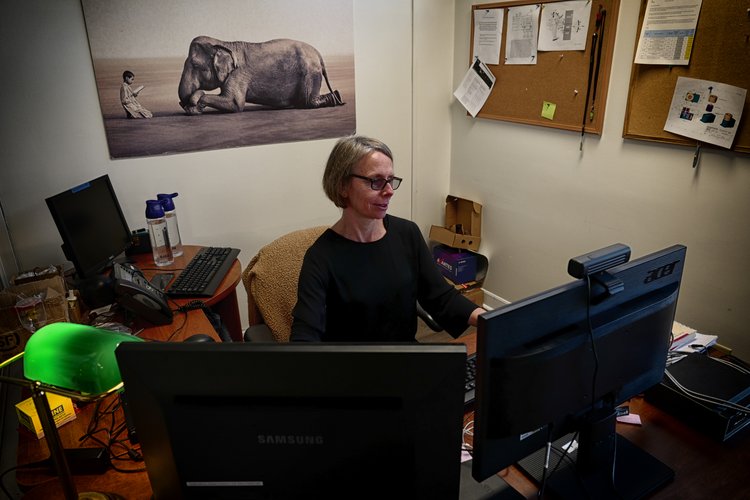The Only Guide for Spectrophotometers
Table of ContentsAbout SpectrophotometersThe Single Strategy To Use For SpectrophotometersMore About SpectrophotometersThe Ultimate Guide To SpectrophotometersNot known Facts About Uv/vis/nirMore About Uv/vis/nirThe 15-Second Trick For Uv/vis3 Simple Techniques For Circular DichroismThe Facts About Spectrophotometers Uncovered8 Simple Techniques For Uv/visExcitement About Circularly Polarized LuminescenceUv/vis Can Be Fun For AnyoneThe Greatest Guide To Uv/vis/nir
It is then scanned through the sample and the reference solutions. Portions of the event wavelengths are transmitted through, or reflected from, the sample and the reference. The resultant light strikes the photodetector device, which compares the relative strength of the two beams. Electronic circuits transform the relative currents into direct transmission portions and/or absorbance/concentration worths.The transmission of a recommendation substance is set as a standard (datum) value, so the transmission of all other substances are taped relative to the initial "zeroed" compound. The spectrophotometer then converts the transmission ratio into 'absorbency', the concentration of particular components of the test sample relative to the preliminary substance.
Since samples in these applications are not easily offered in large amounts, they are particularly suited to being examined in this non-destructive technique. In addition, valuable sample can be saved by using a micro-volume platform where as little as 1u, L of sample is required for total analyses. A brief description of the procedure of spectrophotometry consists of comparing the absorbency of a blank sample that does not contain a colored compound to a sample which contains a colored substance.
What Does Circularly Polarized Luminescence Do?
In biochemical experiments, a chemical and/or physical home is chosen and the treatment that is used is particular to that residential or commercial property in order to obtain more details about the sample, such as the quantity, pureness, enzyme activity, etc. Spectrophotometry can be utilized for a variety of techniques such as figuring out ideal wavelength absorbance of samples, figuring out optimal p, H for absorbance of samples, figuring out concentrations of unknown samples, and identifying the p, Ka of various samples.: 21119 Spectrophotometry is also a useful procedure for protein purification and can also be used as a technique to develop optical assays of a compound.
It is possible to know the concentrations of a 2 component mixture utilizing the absorption spectra of the standard services of each part. To do this, it is required to understand the extinction coefficient of this mixture at 2 wave lengths and the extinction coefficients of services which contain the recognized weights of the two parts.

Little Known Facts About Circular Dichroism.
Region. The concentration of a protein can be estimated by measuring the OD at 280 nm due to the presence of tryptophan, tyrosine and phenylalanine.
Nucleic acid contamination can also interfere. This technique requires a spectrophotometer efficient in determining in the UV area with quartz cuvettes.: 135 Ultraviolet-visible (UV-vis) spectroscopy includes energy levels that thrill electronic shifts. Absorption of UV-vis light thrills molecules that are in ground-states to their excited-states. Noticeable area 400700 nm spectrophotometry is used extensively in colorimetry science.
These curves can be utilized to check a new batch of colorant to inspect if it makes a match to specs, e
Traditional visible standard spectrophotometers can not detect if a colorant or the base material has fluorescence. This can make it difficult to manage color problems if for example one or more of the printing inks is fluorescent. There are 2 significant setups for visual spectrum spectrophotometers, d/8 (spherical) and 0/45.
Researchers utilize this instrument to determine the quantity of substances in a sample. If the substance is more focused more light will be absorbed by the sample; within small varieties, the Beer, Lambert law holds and the absorbance between samples vary with concentration linearly. When it comes to printing measurements 2 alternative settings are frequently used- without/with uv filter to manage better the impact of uv brighteners within the paper stock.
Fascination About Uv/vis
Some applications need little volume measurements which can be performed with micro-volume platforms. As described in the applications area, spectrophotometry can be used in both qualitative and quantitative analysis of DNA, RNA, and proteins. Qualitative analysis can be utilized and spectrophotometers are utilized to tape spectra of compounds by scanning broad wavelength areas to figure out the absorbance residential or commercial properties (the strength of the color) of the compound at each wavelength.

The Circularly Polarized Luminescence PDFs
One significant factor is the type of photosensors that are offered for various spectral areas, however infrared measurement is likewise tough due to the fact that virtually whatever gives off IR as thermal radiation, particularly at wavelengths beyond about 5 m. Another problem is that rather a couple of products such as glass and plastic soak up infrared, making it incompatible as an optical medium.
Samples for IR spectrophotometry might be smeared in between 2 discs of potassium bromide or ground with potassium bromide and pushed into a pellet. Where liquid services are to be determined, insoluble silver chloride is used to build the cell. Spectroradiometers, which run practically like the visible area spectrophotometers, are created to measure the spectral density of illuminants. 2013. p. 13. Allen, DW; Cooksey, C; Tsai, BK (Nov 13, 2009). "Spectrophotometry". Obtained Dec 23, 2018. Ninfa AJ, Ballou DP, Benore M (2010 ). Fundamental Laboratory Techniques for Biochemistry and Biotechnology (2nd ed.). Hoboken: Wiley & Sons. ISBN 9780470087664. OCLC 488246403. Schwedt G (1997 ). The vital guide to analytical chemistry.
Oke, J. B.; Gunn, J. E.
The Circularly Polarized Luminescence Ideas

1021/ac50048a728. ISSN0003-2700. Ninfa AJ, Ballou DP, Benore M (2015 ). Essential Laboratory Approaches for Biochemistry and Biotechnology (3, rev. ed.). Hoboken, NJ: Wiley & Sons. p. 77. ISBN9780470924525. OCLC915641828. "Completely Automatic Double Beam - Atomic Absorption Spectrophotometer (AA 8000)". Lab Equipment. Labindia Analytical Instruments Pvt. Ltd. "Spectrophotometry Applications and Basics".
Getting The Uv/vis/nir To Work
"Applied Spectrophotometry: Analysis of a Biochemical Mixture". Biochemistry and Molecular Biology Education. Journal of Biochemistry Education.
Getting My Uv/vis To Work
U.S. Department of Commerce National Bureau of Standards special publication; 378. Washington, D.C.: U.S. National Bureau of Standards. p. 2. OCLC 920079.
The process begins with a regulated light source that lights up the evaluated sample. In the case of reflection, as this light engages with the sample, some is soaked up or produced. The produced light travels to the detector, which is analyzed, quantified, and presented as industry-standard color scales and indices.
Industry governing bodies typically define specific metrics for particular items, such as Tomato and Coffee indices. The streamlined math looks like this: Where R is the reflection coefficient. have a peek at these guys All terms are evaluated over the visible spectrum from 400 to 700 nm. In the case of transmission, when the light interacts with the sample, it is either soaked up, reflected, or sent.
The Circular Dichroism Statements
Examples include APHA (American Public Health Association) for watercolor and purity analysis, ASTM D1500 for petrochemical color analysis, edible oil indices utilized in food, and color analyses of drinks. All terms are examined over the visible spectrum from 400 to 700 nm.
Image Credit: Matej Kastelic/ Dr. Arnold J. Beckman and his coworkers at the National Technologies Laboratories initially created the spectrophotometer in 1940. In 1935 Beckman founded the company, and the discovery of the spectrophotometer was their most ground-breaking development. Dr. Bruce Merrifield, a Nobel prize-winning biochemist, stated that the invention of the spectrophotometer was "most likely the most essential instrument ever established towards the development of bioscience." Before the discovery of the spectrophotometer, chemical analyses took weeks to complete, with 25% accuracy.
6 Easy Facts About Spectrophotometers Explained
99% precision. With time, researchers kept improving the spectrophotometer design to enhance its performance. The UV abilities of the model B spectrophotometer were improved by changing the glass prism with a quartz prism. Eventually, the Model DU was created, containing a hydrogen light and other improvements. This instrument was utilized in commercial laboratories, centers, and chemistry and biochemistry departments.
Normally, a spectrophotometer is made up of 2 instruments, specifically, a spectrometer and a photometer. A basic spectrophotometer includes a light source, a monochromator, a collimator for straight light beam transmission, a cuvette to place a sample, and a photoelectric detector.
Indicators on Spectrophotometers You Should Know
There are various types of spectrophotometers in numerous shapes and sizes, each with its own purpose or performance. A spectrophotometer determines how much light is reflected by chemical parts. spectrophotometers. It determines the distinction in light intensity based upon the overall amount of light introduced to a sample and the quantity of light beam that goes through the sample option
According to the instrument's style, the sample is placed in between the spectrometer and the photometer. After the light is travelled through the sample, the photometer measures its strength and shows the reading. A spectrophotometer is used to figure out the concentration of both colorless and colored solutes in an option. This instrument is used to identify the rate of a response.